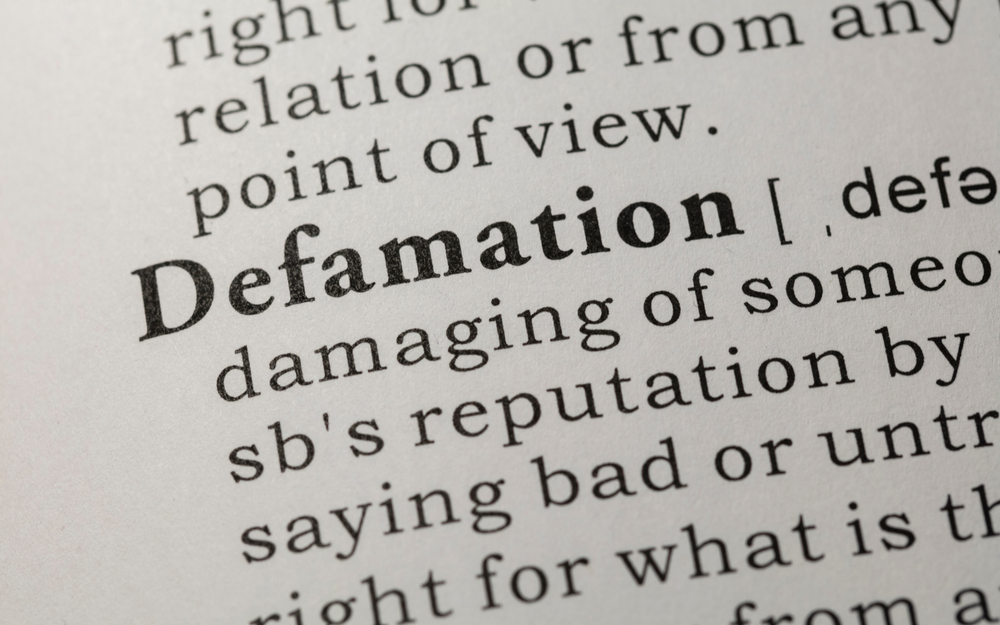Case Study: Oklahoma Trial Highlights the Cost of Defamation

Warren Buffett once said that it takes 20 years to build a reputation, and about five minutes to ruin it. But how much does all this cost?
Well, if a recent defamation case in Oklahoma is any guide, 2 ½ hours of damage to reputation can be worth more than $26 million. Think about that when you’re considering the costs of reputational damage, and the return on investment. (We recognize that this was a media-defamation lawsuit and not a corporate or individual crisis — but the principles of measuring reputational damage are the same.)
The $26 million jury award was in Scott Sapulpa v. Gannett Co., Inc., et al. (Muskogee County District Court in Oklahoma, CJ-21-100). Gannett lost, and earlier this week, a motion for a hearing on the award of attorneys’ fees and costs was filed by the plaintiffs, even as Gannett is appealing the verdict.
Beyond defamation, the case offers a compelling look at how quickly a reputation can be damaged in this age of social media and the internet — and what repair really costs.
White Paper
The litigation was explored in a comprehensive white paper we put together earlier this year with our frequent Los Angeles collaborator, Eric Rose. The white paper, Navigating Reputational Harm: A Deep Dive Into Repairing, Measuring, Metrics, and Legal Implications of Reputational Harm in the Internet Age, was published by Hart + Harvest Press as the first entry in its Media Monograph series. (Hart + Harvest Press was founded by PRCG CEO James Haggerty.)
As described in the white paper, the case:
involved the publication of an online story by the Daily Oklahoman, a Gannett-owned newspaper that is the largest in the state. The online news story inaccurately reported that Scott Sapulpa, an announcer at a girls’ high-school basketball game, used a racial epithet against players who kneeled during the playing of the national anthem. It reported he didn’t realize his comments were being broadcast over a “hot” microphone.
Turned out, the comments were made by another announcer.
Anonymous Source
A reporter at The Oklahoman attributed the comments to Sapulpa based on what he said was a single, anonymous source. The publication rushed to get the story posted, without following proper journalistic protocols:
Microsoft Teams chats between reporters and editors at the newspaper showed a rush to get the story posted. “Are we working on getting a web story posted ASAP?” the managing editor of the newspaper asked, later adding, “We’ll get Cam’s story posted as soon as possible. Let’s plan on that story going on 1A.”
Comments from other journalists at The Oklahoman showed an unwillingness to properly consider whether their story was correct before posting (“we can’t let this guy weasel back into the shadows”). Indeed, the story was published even after conflicting accounts had come forward.
Reputation Management
You can read more about the case and its lessons from the free white paper, but here’s the point for crisis communications and reputation management: The story was posted online only for about 2 ½ hours before it was updated. But in that time, it was picked up by about 800 media outlets worldwide. Eric Rose, who was the damages expert in the trial, estimated it would cost $900,000 for a public relations and social media effort to repair the reputation.
Didn’t the updated story circulate as well and correct the damage? No harm, no foul, right?
Well, interestingly, no. Again, from the white paper (shortened slightly in the interest of word count):
In this new age of the internet and social media republication of posted content, that first version of a story is the one that is circulated widely and across the globe through aggregators … and social media. It doesn’t matter if the story is subsequently updated — the first version is the one that spreads worldwide, with any falsehoods and other inaccurate information intact. The updated or revised stories may appear on the original media outlet’s website or social media, but it is the older, false version that most of the world sees. … Thus, from the standpoint of reputation, the damage is already done.
Image Credit: Feng Yu/Shutterstock
Sign up for our free weekly newsletter on crisis communications. Each week we highlight a crisis story in the news or a survey or study with an eye toward the type of best practices and strategies you can put to work each day. Click here to subscribe.




 Back to Blog
Back to Blog